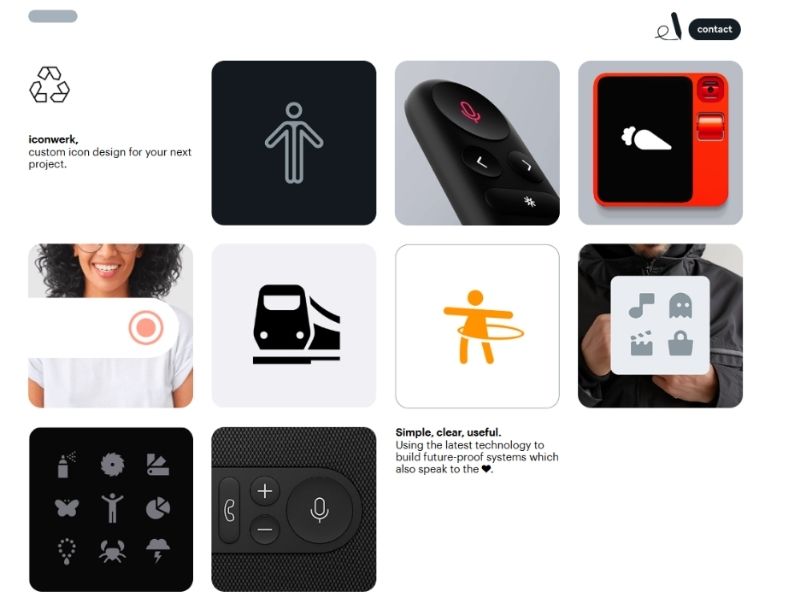UX Trends 2025: From AI-Assisted Design to Bento Grids, What Actually Works
Why UX Design Matters More Than Ever in 2025
What makes a website or app stand out in 2025? Is it bold visuals, clever animations, or something far deeper: an interface that adapts to you before you even know what you need?
UX trends in 2025 has shifted and flashy design alone no longer defines user experience. Today, businesses are judged by how seamlessly their platforms respond to user behaviour, accessibility standards, and ethical expectations.
Whether it’s AI-assisted UX, bento grid layouts, minimal interfaces, or sustainability-driven design, the best products of 2025 are built with one thing in mind: human-centred adaptability.
In this blog, we’ll break down the top UI/UX design trends for 2025, highlight which ones genuinely create value, and explore how businesses can apply them to stay competitive. By the end, you’ll walk away with a clear picture of which trends are worth adopting, what pitfalls to avoid, and how your digital experiences can stand out in a crowded market.
TLDR
- AI-assisted and predictive UX will shape personalisation in real time.
- Bento grid UI and modular layouts improve scannability and flexibility.
- Zero-UI design simplifies interaction but requires strong accessibility.
- Spatial and 3D design add immersion when used with restraint.
- Accessibility, ethics, and sustainability are non-negotiables.
- Micro-animations and storytelling drive engagement when applied purposefully.
- Businesses that prioritise adaptive, ethical, and inclusive design will stand out.
AI-Assisted and Predictive UX Design
AI is reshaping how design is conceived and delivered. Interfaces are no longer static; they adapt to each user in real time, making personalisation faster and more precise, but it also comes with risks.
From Generative AI to Predictive Personalisation
Gen AI is now being used to design page flows, layouts, and even microcopy. Predictive models anticipate user needs based on past behaviour. Just imagine a travel app surfacing your airline, seat choice, and preferred price range before you search.
Opportunities and Risks
- Opportunities: Personalisation at scale, time savings in workflows, adaptive product experiences.
- Risks: Algorithmic bias, over-automation, lack of transparency in data use.
Considering AI-driven design for your brand? Partner with our web development services in Ottawa to ensure predictive design improves your customer journey.
Bento Grids and Modular Layouts

Screenshot of Iconwerk’s website– displaying their use of bento grids.
Why Bento UI Is Spreading in 2025
The bento grid UI trend, inspired by dashboards, is intuitive and visually balanced. Each “block” helps users quickly spot what matters most, making journeys more efficient.
Modular Design for Adaptability
- Works across devices, from widescreens to foldables.
- Makes scaling smoother without breaking layouts.
- Simplifies updates for content-heavy sites.
Planning a redesign in 2025? Explore EspioLabs’ creative design services in Canada to see how modular layouts can make your platform future-ready.
Zero-Click and Minimal Interfaces
Efficiency defines the zero-UI movement. The idea is simple: reduce friction, let users accomplish tasks with fewer steps. But simplicity can’t come at the expense of inclusivity.
Zero-UI Explained
Voice commands, gestures, and automated actions are replacing traditional clicks. Think smart assistants and wearables where voice-first UX drives the interaction.
Accessibility and Zero-Click UX
The risk: excluding people if alternatives are not in place. Gesture navigation without voice or button backups leaves some users behind. Minimal design only succeeds when every user can benefit.
Want to implement zero-UI without losing accessibility? Reach out to our UI/ UX specialists in Canada discuss solutions tailored for your audience.
3D and Spatial Design

Screenshot of 3D Immersive Space within Microsoft Teams.
Immersive design is gaining traction, but it works best when it adds value, not distraction. Used wisely, 3D and spatial experiences create confidence and clarity. For example, Microsoft Team’s immersive space can quickly become distracting during a typical virtual work meeting but can be a great way for virtual teams to engage with each other.
Immersive UI Without Overload
3D product demos and walkthroughs can reduce buyer hesitation. Virtual training environments create memorable learning opportunities.
Practical Use Cases in 2025
- Retail try-ons for clothing or furniture.
- Real estate tours replicating physical walkthroughs.
- Interactive training where users manipulate 3D objects.
Sentiment-Responsive and Emotionally Adaptive UX
Technology is becoming more attuned to human emotion. Sentiment-responsive design adjusts based on context, tone, or behaviour.
Designing for Mood and Context
Customer support chatbots that detect frustration can shift from formal to empathetic tone. This helps brands meet users where they are emotionally.
Ethics and Privacy Considerations
Emotional data is highly sensitive. Collecting it requires transparency, consent, and careful safeguards to avoid undermining trust.
Sustainability and Ethical UX
Sustainable design is no longer optional. Ethical choices in UX signal responsibility to both users and regulators.
Eco-Friendly Interfaces
Lightweight sites reduce bandwidth, speed up load times, and shrink environmental impact. Sustainability and usability go hand in hand.
Transparency and Trust
Ethical UX means clear disclosures: how data is used, when AI is involved, and how accessibility standards are met. Trust builds loyalty.
Need guidance on accessibility and sustainable design? Visit our creative design services page to see how ethical UX can strengthen your brand.
Interactivity, Micro-Animations, and Storytelling
Small interactions create meaningful engagement. Micro-animations and interactive storytelling transform static experiences into dynamic ones.
Micro-Animations with Purpose
Animations confirm clicks, highlight errors, and provide feedback. Subtle signals make experiences smoother without overwhelming users.
UX Storytelling
Story-driven design creates emotional connections. Onboarding sequences, progress trackers, or adaptive journeys hold attention and boost retention.
Looking to boost engagement? Connect with EspioLabs to refine micro-animations and interactive flows.
Accessibility and Responsiveness as Non-Negotiables
Accessibility and responsiveness are the foundation of UX in 2025. Without them, even the most innovative designs fall short.
WCAG 2.2 in Action
The rollout of WCAG 2.2 demands compliance. Accessible interfaces aren’t just legal necessities; they’re brand differentiators.
Responsiveness Across Devices
Users expect seamless experiences across foldables, wearables, and unconventional screens. Responsive design is no longer optional.
What These UX Trends Mean for Businesses in 2025
UX in 2025 is about adaptive, ethical, and inclusive design. Businesses that embrace this will earn loyalty. Those that chase flash alone will fade.
Key takeaways for businesses:
- Adopt AI tools with transparency.
- Build modular, scalable layouts.
- Prioritise accessibility in every design decision.
- Embrace storytelling and interactivity.
- Balance innovation with sustainability and ethics.
A Final Look at UX Trends in 2025
Before we close, here’s a quick side-by-side comparison of the key UX trends, their importance, and how to measure success. This snapshot will help you prioritise which innovations to test first.
| Trend | Why It Matters | Example Use Case | KPI to Track |
| AI-Assisted UX | Personalises experiences in real time | Travel booking app predicting preferences | Task completion rate, conversion uplift |
| Bento Grid UI | Improves scannability and navigation | Ecommerce dashboards | Bounce rate, page engagement |
| Zero UI | Reduces friction with voice/gesture input | Smart home device apps | Error rate, satisfaction score |
| Spatial/3D Design | Adds immersion to digital journeys | Real estate virtual tours | Dwell time, demo engagement |
| Accessibility & WCAG 2.2 | Compliance and inclusivity | Accessible mobile forms | Accessibility audit pass rate |
| Micro-Animations | Guide and confirm user actions | Onboarding sequences | Drop-off reduction, task completion time |
| Sustainability & Ethics | Reduces digital waste, builds trust | Lightweight eco-friendly websites | Page load speed, energy impact metrics |
Turning UX Trends into Lasting Competitive Advantage
The future of UX isn’t about chasing shiny objects. It’s about designing experiences that adapt to people (anticipating needs, removing friction, and building trust). UI/UX design trends in 2025 are evolving quickly, but the ones that matter are those that make technology invisible and intuitive.
If you’re ready to align your platform with trends that deliver, don’t wait for competitors to outpace you.
Reach out to book a UX audit and start building human-centred experiences.
FAQ
What are the biggest UX trends for 2025?
AI-assisted design, bento grid layouts, zero-UI, spatial design, accessibility, and sustainability are the defining trends.
Is bento grid UI good for ecommerce?
Yes. Bento grids simplify navigation and create scannable layouts, making them ideal for product-heavy sites.
How does WCAG 2.2 affect mobile UX?
WCAG 2.2 raises accessibility requirements, especially for mobile gestures and interactions. Compliance improves usability for everyone.
What role does AI play in UX design?
AI personalises experiences and speeds design workflows but must be used transparently to avoid bias and build trust.
